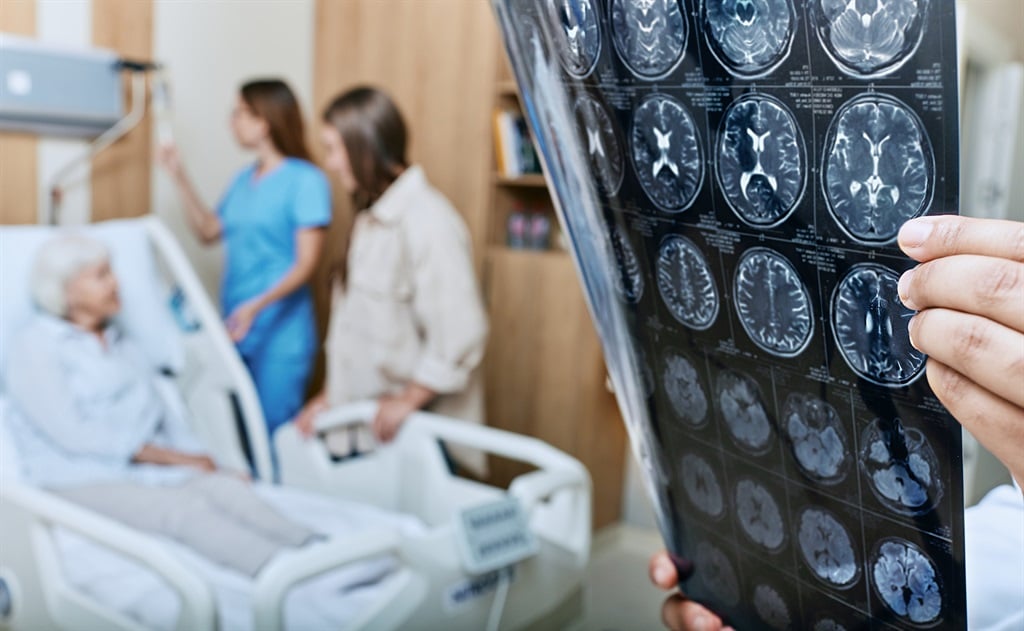Cardiovascular
‘He collapsed and died’: Strokes, a silent killer in SA
More younger people are suffering strokes.
peakSTOCk/Getty Images
- According to the Heart and Stroke Foundation, 215 people die from heart disease and strokes daily.
- The foundation said five people have heart attacks, and 10 have strokes every hour.
- However, because of the lack of awareness about cardiovascular diseases, many people go undiagnosed and untreated until it is too late.
“He collapsed and died”: This line has become all too familiar amid concern over the number of strokes in South Africa, increasingly in younger people.
The owner of the famous Eyadini Lounge in Durban, KwaZulu-Natal, Jabulani “Mjay” Zama, 47, was buried this past weekend after he suffered a stroke.
Other celebrities who died after strokes include Gqom artist Mandla “Mampintsha” Maphumulo, 40, singer Sibongile Khumalo, 63, Dorothy Masuku, 83, and 54-year-old Skeem Saam actor Charles Maja.
According to the Heart and Stroke Foundation, 215 people die from heart disease and strokes daily.
The foundation said five people have heart attacks, and 10 have strokes every hour.
However, because of the lack of awareness about cardiovascular diseases, many people go undiagnosed and untreated until it is too late.
According to professionals, stroke was preventable if detected earlier.
South African singer Lira, 44, is recovering well after her stroke in Germany last year.
She could not speak and revealed she was diagnosed with aphasia, a language disorder caused by damage in a specific area of the brain that controls language expression and comprehension.
READ | ‘Today is a good day’: Lira speaks publicly for the first time since suffering a stroke
Last month, she said she was still recovering but could only communicate in English as her language centre was damaged.
Musician L’vovo Derrango also suffered a minor stroke in December last year.
The head of the internal medicine department at the University of KwaZulu-Natal Medical School, Professor Bulie Magula, said many people were dying from stroke because of the increasing burden of diseases that increase the risk of developing stroke.
She added:
Changes in the type of food we eat, lower levels of physical activity, stress, and smoking drive the risk factors for stroke such as diabetes mellitus, hypertension, high cholesterol, obesity, and heart disease. The increasing burden of stroke is also observed among those living with HIV.
Magula said the stroke was a cardiovascular complication due to reduced blood supply to parts of the brain that control various body functions.
“Damage to blood vessels as a complication of diabetes, hypertension, and high cholesterol result in a reduction of or cutting off blood supply to parts of the brain responsible for critical bodily functions.
“When we do a CT brain scan of someone who has had a stroke, the evidence of the damage can be seen as either an area of bleeding or no blood supply.
“Whether there is bleeding or cutting off in blood supply, the result is the same as the brain tissue dies.
“This is usually due to disruption in the blood vessel or blockage from a clot that could be coming from the heart. So, the heart is a vital organ that we must examine to find underlying causes of stroke.”
ALSO READ | Strokes are on the rise among younger people: A neurologist offers important tips to be aware of
She added traditionally, strokes used to be most prevalent in older people as most of the risk factors for stroke occurred mainly in them.
Magula said lately, strokes occurred quite commonly among younger people.
“This is because of the increasing burden of the risk factors among younger people, which are also fuelled by the growing burden of obesity. HIV infection also contributes to cardiovascular disease and stroke burden,” she added.

